Anqi Liu
Group-Sensitive Offline Contextual Bandits
Oct 31, 2025Abstract:Offline contextual bandits allow one to learn policies from historical/offline data without requiring online interaction. However, offline policy optimization that maximizes overall expected rewards can unintentionally amplify the reward disparities across groups. As a result, some groups might benefit more than others from the learned policy, raising concerns about fairness, especially when the resources are limited. In this paper, we study a group-sensitive fairness constraint in offline contextual bandits, reducing group-wise reward disparities that may arise during policy learning. We tackle the following common-parity requirements: the reward disparity is constrained within some user-defined threshold or the reward disparity should be minimized during policy optimization. We propose a constrained offline policy optimization framework by introducing group-wise reward disparity constraints into an off-policy gradient-based optimization procedure. To improve the estimation of the group-wise reward disparity during training, we employ a doubly robust estimator and further provide a convergence guarantee for policy optimization. Empirical results in synthetic and real-world datasets demonstrate that our method effectively reduces reward disparities while maintaining competitive overall performance.
IA2: Alignment with ICL Activations Improves Supervised Fine-Tuning
Sep 26, 2025Abstract:Supervised Fine-Tuning (SFT) is used to specialize model behavior by training weights to produce intended target responses for queries. In contrast, In-Context Learning (ICL) adapts models during inference with instructions or demonstrations in the prompt. ICL can offer better generalizability and more calibrated responses compared to SFT in data scarce settings, at the cost of more inference compute. In this work, we ask the question: Can ICL's internal computations be used to improve the qualities of SFT? We first show that ICL and SFT produce distinct activation patterns, indicating that the two methods achieve adaptation through different functional mechanisms. Motivated by this observation and to use ICL's rich functionality, we introduce ICL Activation Alignment (IA2), a self-distillation technique which aims to replicate ICL's activation patterns in SFT models and incentivizes ICL-like internal reasoning. Performing IA2 as a priming step before SFT significantly improves the accuracy and calibration of model outputs, as shown by our extensive empirical results on 12 popular benchmarks and 2 model families. This finding is not only practically useful, but also offers a conceptual window into the inner mechanics of model adaptation.
ODD: Overlap-aware Estimation of Model Performance under Distribution Shift
Jun 17, 2025Abstract:Reliable and accurate estimation of the error of an ML model in unseen test domains is an important problem for safe intelligent systems. Prior work uses disagreement discrepancy (DIS^2) to derive practical error bounds under distribution shifts. It optimizes for a maximally disagreeing classifier on the target domain to bound the error of a given source classifier. Although this approach offers a reliable and competitively accurate estimate of the target error, we identify a problem in this approach which causes the disagreement discrepancy objective to compete in the overlapping region between source and target domains. With an intuitive assumption that the target disagreement should be no more than the source disagreement in the overlapping region due to high enough support, we devise Overlap-aware Disagreement Discrepancy (ODD). Maximizing ODD only requires disagreement in the non-overlapping target domain, removing the competition. Our ODD-based bound uses domain-classifiers to estimate domain-overlap and better predicts target performance than DIS^2. We conduct experiments on a wide array of benchmarks to show that our method improves the overall performance-estimation error while remaining valid and reliable. Our code and results are available on GitHub.
MOBODY: Model Based Off-Dynamics Offline Reinforcement Learning
Jun 10, 2025Abstract:We study the off-dynamics offline reinforcement learning problem, where the goal is to learn a policy from offline datasets collected from source and target domains with mismatched transition. Existing off-dynamics offline RL methods typically either filter source transitions that resemble those of the target domain or apply reward augmentation to source data, both constrained by the limited transitions available from the target domain. As a result, the learned policy is unable to explore target domain beyond the offline datasets. We propose MOBODY, a Model-Based Off-Dynamics offline RL algorithm that addresses this limitation by enabling exploration of the target domain via learned dynamics. MOBODY generates new synthetic transitions in the target domain through model rollouts, which are used as data augmentation during offline policy learning. Unlike existing model-based methods that learn dynamics from a single domain, MOBODY tackles the challenge of mismatched dynamics by leveraging both source and target datasets. Directly merging these datasets can bias the learned model toward source dynamics. Instead, MOBODY learns target dynamics by discovering a shared latent representation of states and transitions across domains through representation learning. To stabilize training, MOBODY incorporates a behavior cloning loss that regularizes the policy. Specifically, we introduce a Q-weighted behavior cloning loss that regularizes the policy toward actions with high target-domain Q-values, rather than uniformly imitating all actions in the dataset. These Q-values are learned from an enhanced target dataset composed of offline target data, augmented source data, and rollout data from the learned target dynamics. We evaluate MOBODY on MuJoCo benchmarks and show that it significantly outperforms state-of-the-art baselines, with especially pronounced improvements in challenging scenarios.
Improving Coverage in Combined Prediction Sets with Weighted p-values
May 17, 2025Abstract:Conformal prediction quantifies the uncertainty of machine learning models by augmenting point predictions with valid prediction sets, assuming exchangeability. For complex scenarios involving multiple trials, models, or data sources, conformal prediction sets can be aggregated to create a prediction set that captures the overall uncertainty, often improving precision. However, aggregating multiple prediction sets with individual $1-\alpha$ coverage inevitably weakens the overall guarantee, typically resulting in $1-2\alpha$ worst-case coverage. In this work, we propose a framework for the weighted aggregation of prediction sets, where weights are assigned to each prediction set based on their contribution. Our framework offers flexible control over how the sets are aggregated, achieving tighter coverage bounds that interpolate between the $1-2\alpha$ guarantee of the combined models and the $1-\alpha$ guarantee of an individual model depending on the distribution of weights. We extend our framework to data-dependent weights, and we derive a general procedure for data-dependent weight aggregation that maintains finite-sample validity. We demonstrate the effectiveness of our methods through experiments on synthetic and real data in the mixture-of-experts setting, and we show that aggregation with data-dependent weights provides a form of adaptive coverage.
WATCH: Adaptive Monitoring for AI Deployments via Weighted-Conformal Martingales
May 12, 2025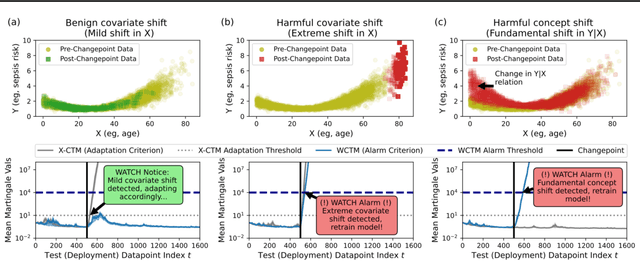

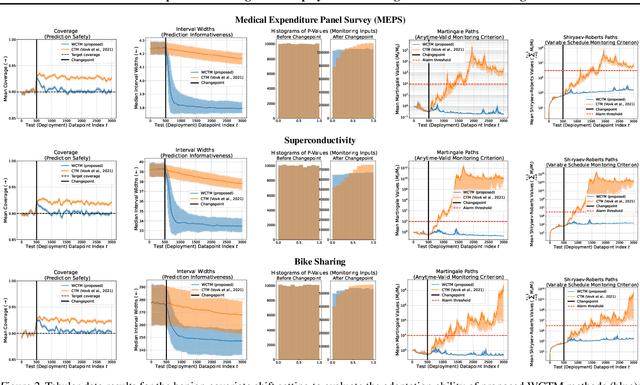

Abstract:Responsibly deploying artificial intelligence (AI) / machine learning (ML) systems in high-stakes settings arguably requires not only proof of system reliability, but moreover continual, post-deployment monitoring to quickly detect and address any unsafe behavior. Statistical methods for nonparametric change-point detection -- especially the tools of conformal test martingales (CTMs) and anytime-valid inference -- offer promising approaches to this monitoring task. However, existing methods are restricted to monitoring limited hypothesis classes or ``alarm criteria'' (such as data shifts that violate certain exchangeability assumptions), do not allow for online adaptation in response to shifts, and/or do not enable root-cause analysis of any degradation. In this paper, we expand the scope of these monitoring methods by proposing a weighted generalization of conformal test martingales (WCTMs), which lay a theoretical foundation for online monitoring for any unexpected changepoints in the data distribution while controlling false-alarms. For practical applications, we propose specific WCTM algorithms that adapt online to mild covariate shifts (in the marginal input distribution) while quickly detecting and diagnosing more severe shifts, such as concept shifts (in the conditional label distribution) or extreme (out-of-support) covariate shifts that cannot be easily adapted to. On real-world datasets, we demonstrate improved performance relative to state-of-the-art baselines.
WATCH: Weighted Adaptive Testing for Changepoint Hypotheses via Weighted-Conformal Martingales
May 07, 2025



Abstract:Responsibly deploying artificial intelligence (AI) / machine learning (ML) systems in high-stakes settings arguably requires not only proof of system reliability, but moreover continual, post-deployment monitoring to quickly detect and address any unsafe behavior. Statistical methods for nonparametric change-point detection -- especially the tools of conformal test martingales (CTMs) and anytime-valid inference -- offer promising approaches to this monitoring task. However, existing methods are restricted to monitoring limited hypothesis classes or ``alarm criteria,'' such as data shifts that violate certain exchangeability assumptions, or do not allow for online adaptation in response to shifts. In this paper, we expand the scope of these monitoring methods by proposing a weighted generalization of conformal test martingales (WCTMs), which lay a theoretical foundation for online monitoring for any unexpected changepoints in the data distribution while controlling false-alarms. For practical applications, we propose specific WCTM algorithms that accommodate online adaptation to mild covariate shifts (in the marginal input distribution) while raising alarms in response to more severe shifts, such as concept shifts (in the conditional label distribution) or extreme (out-of-support) covariate shifts that cannot be easily adapted to. On real-world datasets, we demonstrate improved performance relative to state-of-the-art baselines.
Always Tell Me The Odds: Fine-grained Conditional Probability Estimation
May 02, 2025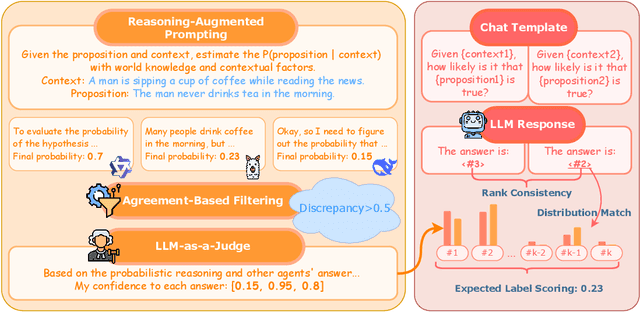
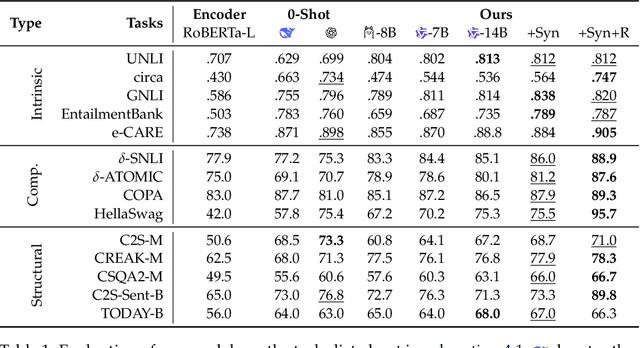

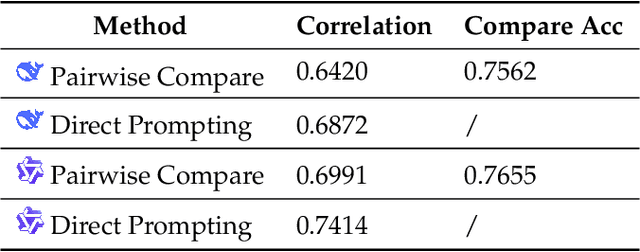
Abstract:We present a state-of-the-art model for fine-grained probability estimation of propositions conditioned on context. Recent advances in large language models (LLMs) have significantly enhanced their reasoning capabilities, particularly on well-defined tasks with complete information. However, LLMs continue to struggle with making accurate and well-calibrated probabilistic predictions under uncertainty or partial information. While incorporating uncertainty into model predictions often boosts performance, obtaining reliable estimates of that uncertainty remains understudied. In particular, LLM probability estimates tend to be coarse and biased towards more frequent numbers. Through a combination of human and synthetic data creation and assessment, scaling to larger models, and better supervision, we propose a set of strong and precise probability estimation models. We conduct systematic evaluations across tasks that rely on conditional probability estimation and show that our approach consistently outperforms existing fine-tuned and prompting-based methods by a large margin.
ICL CIPHERS: Quantifying "Learning'' in In-Context Learning via Substitution Ciphers
Apr 28, 2025Abstract:Recent works have suggested that In-Context Learning (ICL) operates in dual modes, i.e. task retrieval (remember learned patterns from pre-training) and task learning (inference-time ``learning'' from demonstrations). However, disentangling these the two modes remains a challenging goal. We introduce ICL CIPHERS, a class of task reformulations based on substitution ciphers borrowed from classic cryptography. In this approach, a subset of tokens in the in-context inputs are substituted with other (irrelevant) tokens, rendering English sentences less comprehensible to human eye. However, by design, there is a latent, fixed pattern to this substitution, making it reversible. This bijective (reversible) cipher ensures that the task remains a well-defined task in some abstract sense, despite the transformations. It is a curious question if LLMs can solve ICL CIPHERS with a BIJECTIVE mapping, which requires deciphering the latent cipher. We show that LLMs are better at solving ICL CIPHERS with BIJECTIVE mappings than the NON-BIJECTIVE (irreversible) baseline, providing a novel approach to quantify ``learning'' in ICL. While this gap is small, it is consistent across the board on four datasets and six models. Finally, we examine LLMs' internal representations and identify evidence in their ability to decode the ciphered inputs.
The Composite Visual-Laser Navigation Method Applied in Indoor Poultry Farming Environments
Apr 11, 2025
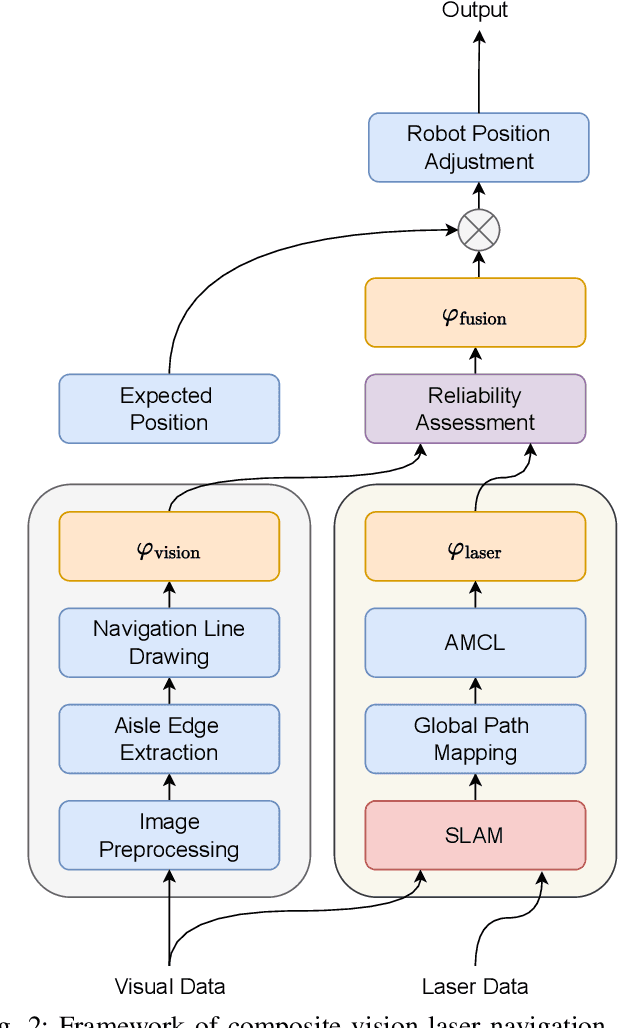


Abstract:Indoor poultry farms require inspection robots to maintain precise environmental control, which is crucial for preventing the rapid spread of disease and large-scale bird mortality. However, the complex conditions within these facilities, characterized by areas of intense illumination and water accumulation, pose significant challenges. Traditional navigation methods that rely on a single sensor often perform poorly in such environments, resulting in issues like laser drift and inaccuracies in visual navigation line extraction. To overcome these limitations, we propose a novel composite navigation method that integrates both laser and vision technologies. This approach dynamically computes a fused yaw angle based on the real-time reliability of each sensor modality, thereby eliminating the need for physical navigation lines. Experimental validation in actual poultry house environments demonstrates that our method not only resolves the inherent drawbacks of single-sensor systems, but also significantly enhances navigation precision and operational efficiency. As such, it presents a promising solution for improving the performance of inspection robots in complex indoor poultry farming settings.
 Add to Chrome
Add to Chrome Add to Firefox
Add to Firefox Add to Edge
Add to Edge